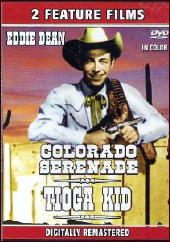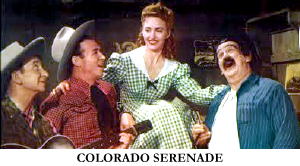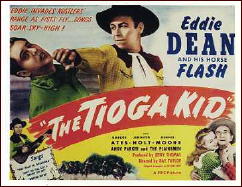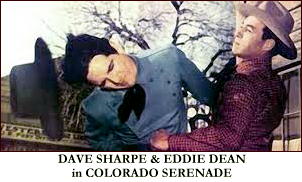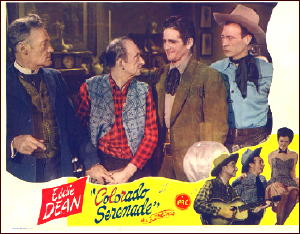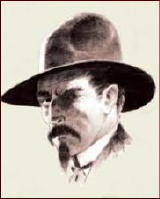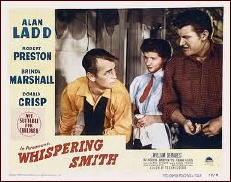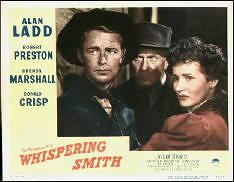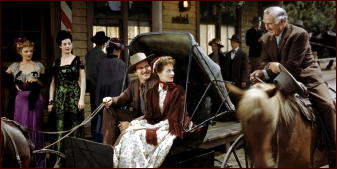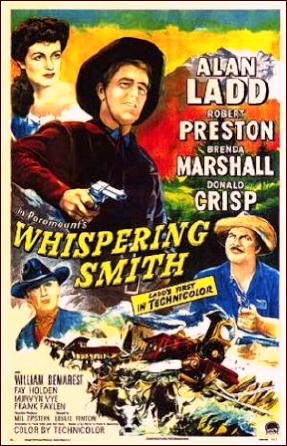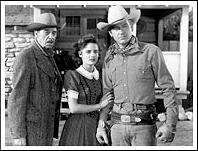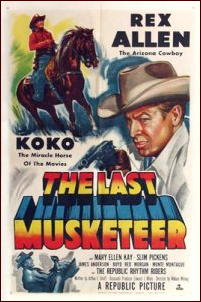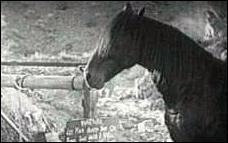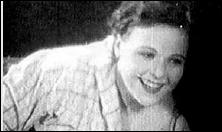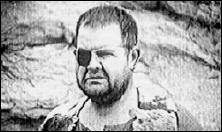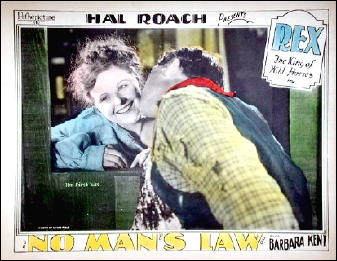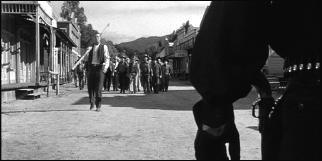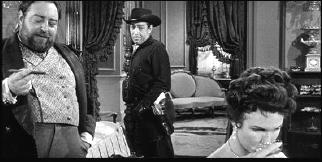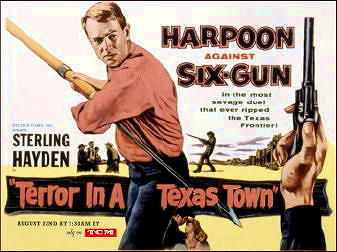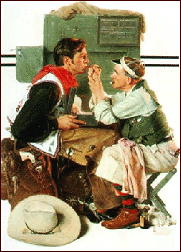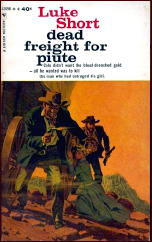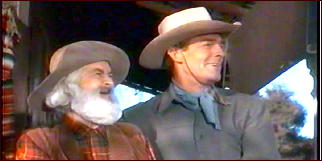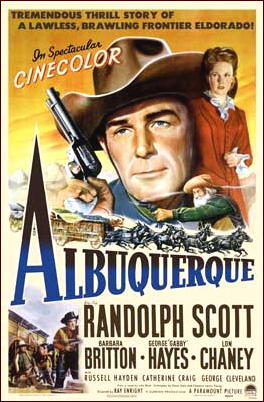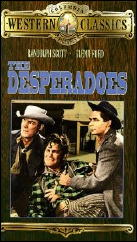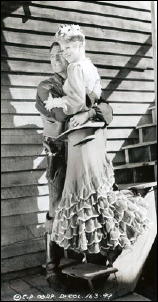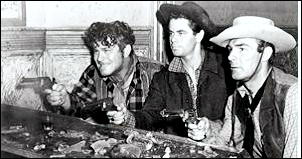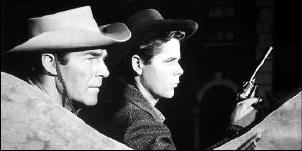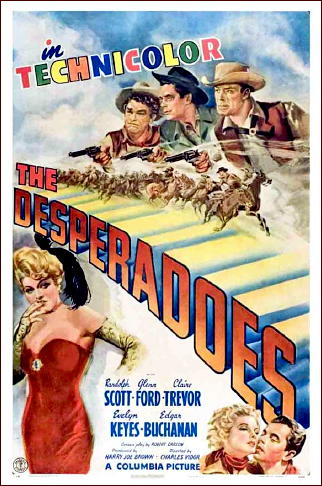Ed Hulse on WHISPERING SMITH
and GEORGE O’BRIEN
== Following my recent
review of the Alan Ladd version of
Whispering Smith, the movie, which included some commentary about the real Whispering Smith and some of the earlier films the character was in, Ed Hulse left two long comments that I think deserve a wider audience:
The 1916 Whispering Smith was shot in ten reels. According to which report one chooses to believe, it was originally intended to be either a serial or an extra-long feature film. In any event, it was released as two five-reel feature films, the first in June and the second in July.
Although McGowan played the title role, his then-wife Helen Holmes got top billing in both Whispering Smith and Medicine Bend. She was a much bigger box-office draw, having attained fame as the eponymous star of the Hazards of Helen series (which is often mistaken for a cliffhanging chapter play, owing to the fact that Holmes also starred in episodic thrillers and at the time was second only to Pearl White in the serial-queen sweepstakes).
McGowan’s involvement with the character didn’t stop with the two 1916 features, however. He also played Smith in Universal’s 1927 serial Whispering Smith Rides, but again lost top billing — this time to Wallace MacDonald, whose character was the story’s juvenile lead and carried most of the action.
The piece on the Thrilling Detective website fails to mention that Rides was remade by Universal just three years later, again as a ten-chapter serial, this time titled The Lightning Express. Al Ferguson, usually cast as a heavy, played Smith; the role played by MacDonald in Rides was taken in Express by Lane Chandler.
Although the George O’Brien Whispering Smith Speaks is ostensibly based on several Spearman yarns, it’s essentially an original story using nothing from the author’s works other than some locations and character names.
An unbilled J. P. McGowan has a bit part as a rail-riding old-timer who shares his boxcar with fellow stowaway O’Brien (whose character’s real name is Gordon Harrington Jr.; he only uses Don Smith — not John, as the Thrilling Detective entry erroneously reports — as an alias). Since McGowan had been directing railroad films since 1912, I believe Whispering Smith Speaks producer Sol Lesser hired him as a second-unit director to handle the various train scenes.
The O’Brien film is a particular favorite of mine because George and I were friends for a couple years leading up to his debilitating 1981 stroke, and for my money Speaks is the film that best captures his off-screen personality. But as a Spearman adaptation it isn’t worth a tinker’s damn.
== Then in Comment #5, # Barry Lane said:
Darcy O’Brien wrote a pair of novels, A Way Of Life Like Any Other and Marguerite In Hollywood, that with devastating honesty, and brilliant writing, illustrate the world of George and Marguerite. Ed, you must have known these people and your insights are welcome.
== Here’s Ed’s long reply:
Well, I could go on forever about George O’Brien, but the short form is this: In 1979 I chaired Cinecon, an annual convention of vintage-film fans, collectors, and archivists. Since our guest stars were primarily actors from the silent and early-talkie years, I decided to invite my two top favorites of that era (that is, of those still alive and ambulatory at the time): George and Alice Faye.
Alice had other plans but George — who had been invited to, but never before attended, similar events — accepted my invitation because coming to NYC for the convention would allow him to spend some time with his daughter Orin, a musician with the New York Philharmonic.
Part of our tribute to George included a screening of Sunrise at the Museum of Modern Art, which earlier that year had won a special Academy Award for its film-preservation efforts. Since George was justifiably proud of that film, the opportunity of seeing it at the Museum held considerable appeal.
When the film ended, there wasn’t a dry eye in the house, and I encouraged him to take a bow. The still-fit 80-year-old bounded atop the auditorium stage and, waving and beaming, accepted a standing ovation that, I was told later, lasted nearly five minutes.
As a long-time hobbyist who turned his passion into a career by writing professionally about movies and moviemakers, I’ve met dozens — hundreds, even — of film folk over the years. It doesn’t take long to realize that “picture people†are just as diverse as society at large. You have some nice people and you have some real pricks. Early on, one learns not to judge them by their screen personas.
To my delight, however, George O’Brien turned out to be not only the perfect convention guest — making himself available to fans practically every hour of Cinecon’s three and a half days — but a wonderful, down-to-earth human being as well. I picked him up at New York’s La Guardia Airport, and by the time we had completed the 45-minute drive back to Manhattan, I already felt like we were old friends.
That was George’s way. To this day I have never known a man who could make friends as easily as George O’Brien. And he didn’t put on airs, either: when I offered that first evening to take him to a high-class restaurant in midtown Manhattan, he replied: “Well, that’s very generous of you, Ed, but how about we just go to a comfy place where we have a good hamburger and get to know each other better?â€
Throughout the weekend I never had to look far for him: wherever a group of convention attendees had clustered, I knew he was in the middle, telling some of his many amazing stories. He jokingly referred to himself as “a man of few thousand words,†and he wasn’t kidding.
After the convention, we stayed in touch via letters and phone calls. George still traveled frequently and often wrote me from an airplane while flying to Hawaii or the Philippines or some other Pacific destination. He invited me to visit him when and if I ever came to Los Angeles, but to my everlasting regret he was in Hawaii when I went to Tinseltown for a convention the following year.
That same year (1980), based on the wonderful time he’d had at Cinecon, George finally accepted the invitation extended yearly by organizers of the Memphis Western Film Fair, another annual confab. Since I normally attended that show anyway, I looked forward to seeing George again, especially since one of his fellow guests was Cecilia Parker, his leading lady of several films and a close personal friend as well. But I deliberately decided not to tell him I’d be there.
As the Memphis film festival — being oriented toward “B†Westerns and serials — catered to a somewhat different fan base than Cinecon, I realized that virtually all of the attendees would be meeting George for the first time. Upon arriving at the show, I could instantly tell where he was by looking for the biggest crowd huddled in a circle. But I didn’t want to interfere with these other fans and deliberately remained in the back of the room while he autographed photos and regaled the fans — most of them middle-aged men who gazed at their childhood hero with the worshipful stare of a ten-year-old — with stories of Hollywood’s halcyon days.
At length the crowd thinned and we made eye contact. Then, as though he had last seen me a day earlier, he smiled and said: “Oh, hello, Ed.†After signing a few more stills and wrapping up a story, he told the surrounding fans, “Gents, please excuse me for a minute while I go say hello to an old friend…†— at which point he gestured to me, and all eyes swung in my direction. To this day, 31 years later, I still remember the pride I felt at being identified as one of George O’Brien’s old friends.
Later that day, during a lull in the action, George said to me: “Oh, let me introduce you to Skippy.†I had not the slightest idea whom he meant; no such name appeared on the convention guest list. But it turned out to be Cecilia Parker.
“Skippy,†he said, “I’d like you to meet a good friend of mine, Ed Hulse.†I stammered a bit as I shook her hand, and Parker instantly knew why I was temporarily tongue-tied. “He’s been calling me Skippy for close to 50 years,†she explained. “He gave me that nickname when we did our first picture together [1931’s The Rainbow Trail].†At the time she was 17 and just out of convent school.
I must be a man of few thousand words myself, because I realize I still haven’t answered the questions posed above.
I met Darcy in 1991 at a 60th anniversary screening of Riders of the Purple Sage, the film that paired George and Marguerite and eventually led to their marriage.
He told me he regretted that some people had assumed the George-like character in A Way of Life Like Any Other was identical to his dad in every particular. Like most novelists, he created characters who were composites. (Although I later learned, however, that his mother was closer to the Marguerite in Hollywood protagonist than George was to his Way of Life counterpart.)
And in any case, George didn’t take offense. In fact, he mentioned the book in a couple different letters to me, in one case proudly reporting that it had just won some literary award.
I’m not given to idolatry of my favorite movie stars; in fact, my experiences with some have made me quite cynical about the breed in general. But George O’Brien impressed me profoundly, and I still cherish the memory of our relatively brief but genuinely warm friendship.
George even took something of a paternal interest in me, giving encouragement when I began my career as a professional writer and telling a mutual friend that he was concerned about my recent weight gain.
I often cite Whispering Smith Speaks — which is really a romantic comedy, not a blood-and-thunder action piece — as the film whose protagonist best represents the real George O’Brien: warm, funny, gregarious, supremely self-assured without being arrogant.
It’s well worth seeking out for that reason alone, although it’s never been commercially available on any home video format. You can only get it in bootleg VHS or DVD versions.
